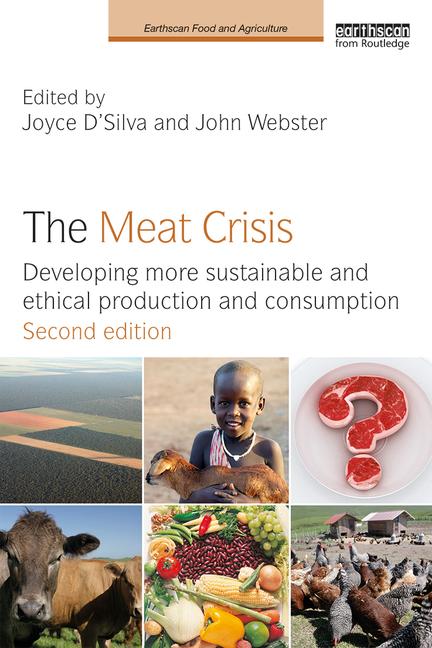Antibiotics: upon further review …






Believe it or not, the current form of the draft guidance has been developed with the guidance of science and common sense.
Overall, the new order grants veterinarians and livestock producers the ability to continue to use the cephalosporin drugs that are currently approved for use in livestock, but it promotes the judicious use of these products. Two cephalosporin drugs are currently approved for use in food animals. One of them is ceftiofur, which is used to treat respiratory infections in cattle, swine, sheep and goats; foot rot, metritis,E. coli infections in day-old chicks and poults; and clinical mastitis in lactating dairy cattle. The other approved drug is cephaprin, which is used to treat mastitis in lactating cattle.
In July 2008, the FDA released an order that would have required livestock producers and veterinarians to stop the extra label use of cephalosporins, which are used to treat a variety of bacterial infections in both humans and animals. Extra label use simply means that a drug is being used in a way that is different than the label states. At first glance, this may seem fairly reasonable — use the drug following the instructions on the label, or don’t use it at all. Unfortunately, this issue was not so simple.
During the comment period that followed the initial publication of the July 2008 order, the FDA received approximately 170 comments regarding the potential ruling. Only two of the comments were in support of the ruling as it was written. All of the other comments described concerns for the broad scope of the potential prohibition of all cephalosporins or the perception that the FDA had employed the “precautionary principle” in the development of the order. Simply put, the precautionary principle assumes that a compound is harmful until proven safe. In the U.S., we prefer to use scientific justification and risk analysis over immediate application of the precautionary principle.
After considering the comments, the FDA realized that more time was needed to come up with a reasonable and justified approach to the issue of cephalosporin use in livestock. As a result, the 2008 order never took effect, and a new order was released Jan. 6, 2012. The new order allows the use of some drugs that are classified as cephalosporins and focuses on promoting use only when it is necessary and appropriate.
According to the Federal Register[i] following uses of cephalosporins in cattle, swine, chickens and turkeys are prohibited:
1. “For disease prevention purposes.” This should not be confused with disease treatment.
2. “Use at dose levels, frequencies, or routes of administration other than those stated in the labeling.”
3. “Use of products not approved for the major food species.” This refers to the potential use of human or companion animal cephalosporin drugs to treat cattle, swine, chickens and turkeys.
The FDA also defined a series of exemptions in the recent order of prohibition. They are:
1. “Use of approved cephaprin products in food producing animals.” At this time, cephaprin drugs are not used in human medicine and they are only approved for the treatment of mastitis, which is an infection of the mammary gland, in lactating cows.
2. “Use to treat or control an extralabel disease indication as long as such use adheres to a labeled dosing regimen approved for that species and production class.” This allows veterinarians to take the liberty of using cephalosporin drugs that are approved for use in livestock for disease indications that are not mentioned on the label of the product as long as they follow the labeled dosage instructions.
3. “Use in food-producing minor species.” This includes use in livestock other than cattle, swine, chickens and turkeys.
The FDA cites several studies in the Federal Register that accentuate the need to conserve antibiotic use for the treatment of disease instead of the prevention of disease. This need is based on the need to preserve the efficacy of drugs that promote animal and human health. The issue is not centered on the use of human drugs in livestock in this case, but on the ability of pathogens to develop resistance to other drugs in the cephalosporin class that are useful for treating infections in humans after exposure to the cephalosporin drugs that are used in livestock. This threat is very real and has been documented in the Federal Register as part of the FDA’s justification for the order of prohibition.
The ability of pathogens to develop resistance to antimicrobial substances, including antibiotics and sanitizers, has been documented since the middle of the 20th century. Between the time penicillin was introduced, in 1944, and 1950, approximately 44% of Staphylococcus aureus strains had become resistant[ii]. Anyone who works in sanitation in a food-processing facility understands the need to switch sanitizers from time to time to prevent the development of resistant pathogens. This concept is based on the fact that pathogens develop resistance very quickly — and when sanitizers stop working, people get sick.
In order to maintain the efficacy of the antibiotics that we use for maintaining animal and human health, we must use them responsibly. The new order of prohibition would allow veterinarians to continue to prescribe cephalosporins for use in livestock while also preventing the use of these compounds in ways that deviate from the label instructions for major food animal species. As we continue to grapple with the ability of pathogens to develop resistance to antimicrobial compounds, it is important that we take the maintenance of animal and human health into consideration. In the long run, the goal of managing the existing antimicrobial compounds that we have must focus on extending their effective lives as long as possible.
The comment period for the recent order of prohibition is slated to remain open until March 6, 2012. To comment on this order, visit www.regulations.gov.
Looking for a reprint of this article?
From high-res PDFs to custom plaques, order your copy today!












